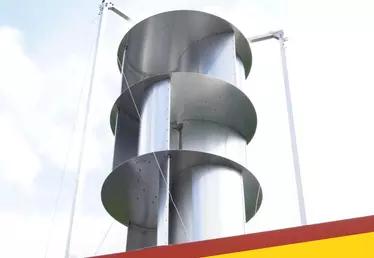

Hero banner custom title
How will Poland phase out coal?
10 min
After announcing that it would be shutting down its mines by the year 2049, Poland is now relying on renewable energies and nuclear power to replace its black gold.
September 2020 was a historical turning point for Poland, being the moment when the country – Europe’s leading coal producer - announced its intention to ultimately abandon this industry. As the fulcrum of Poland’s economy (and the guarantee of its energy-independence), coal still accounts for 70% of the country’s electricity generation. This percentage is expected to decline dramatically over the next 30 years, with all mines being gradually closed by 2049, one year before the carbon neutrality* target date that the European Union has set. The move is seen as nothing less than a small revolution in Warsaw, being the only European government that had refused to commit to the neutrality objective that is a leading pillar of the EU’s battle against climate change.
A psychological barrier
The question remains whether Poland could have made this change earlier. According to Lidia Wojtal, energy policy expert at the Berlin-based think tank Agora Energiewende (and formerly a Polish government climate negotiator), "Some may feel that 2049 is an unambitious target but it results from a consensus that was only reached following long and often arduous negotiations between government and unions. It is important to note that a major psychological barrier has actually been overcome here, since this is the first time that there has been widespread acceptance by the Polish public of the need to end coal mining”. In actual fact, it is possible that the transition will happen ahead of schedule: because the European Commission could ask Warsaw to align its actions with whatever new climate contingencies may arise; but also and above all for economic reasons, namely the fact that Poland’s coal industry has been in decline for a number of years already.
This downturn was further exacerbated by the Covid-19 pandemic and its negative effect on total energy demand. Other factors include competition from cheaper coal (Russian imports, in particular) and from renewable energies, whether generated in Poland itself or in neighbouring countries like Germany. In 2019 and 2020, Poland’s state-owned PGG - one of Europe's largest coal companies - suffered colossal losses and would have gone under in the absence of massive government support. According to Wojtal, the group’s increasingly unprofitable mines lost something like 1 billion euros in 2020, a problem compounded by its ageing coal-fired power plants. As noted by Aleksandra Gawlikowska-Fyk from the Polish energy think tank Forum Energii, "This affects energy costs for industry and consumers alike. Coal’s market share in Poland has been decreasing slowly but surely”. On top of this, carbon credit prices** have risen sharply on the European market in recent years and added to the costs already weighing upon this high emissions sector.
The move to renewable energies and nuclear power
In terms of which energy sources Poland might use to replace its black gold, the government announced in September 2020 that it planned to invest something like €33 billion in nuclear power and renewable energy sources, with this latter move being positively encouraged under European climate policy. According to Gawlikowska-Fyk, "Poland needs to accelerate its development [of these two sources’]. Solar photovoltaics have experienced rapid expansion for two years now. But current regulations still hamper investment in onshore wind. In the medium term, the Polish government is betting on offshore wind. In the meantime, gas is likely to serve as a transitory fuel”. In 2019, Poland was already producing 16% of its electricity from renewable sources. More than half of this came from wind power, with biomass (wood and waste) accounting more or less for a further third -with some cities opting for the latter sources to replace their coal-fired heat-producing power plants. As for nuclear power, Poland’s plans for the time being include opening a first reactor in 2033, followed by six others from 2040 onwards. Only time will tell, however, whether this timetable will be met.
In 2019, Poland produced 16% of its electricity from renewable energy sources
The fact remains that between the decline of coal and the rise of other energy sources, the situation remains uncertain due to the almost one-decade long gap in Poland’s energy planning. As Agora Energiewende’s Wojtal sees it, "Government support for obsolete coal-fired power plants ceases after 2025, at which point companies will want to shut them down then. That means that at least 10 GW of electrical power is going to disappear within a decade - a scenario increasingly emerging as a serious threat to the stability of the Polish energy system, both given the lack of any coherent counter-strategy" and also because it is unlikely that the government will agree to continue controversial coal imports at a time when Polish mines are closing one after the other.
The next question then becomes whether the investments transforming Poland's energy landscape are likely to spark higher energy costs in a country that is already one of Europe’s poorest***. Wojtal believes this to be the case because "…companies and even the government are quite clear in this respect”. Gawlikowska-Fyk, on the other hand, points out that the measures in question are actually preventing even worse outcomes since “energy prices would be much higher in the long run if we do not transition to renewables today and co-finance this transformation using European funds" – a reference to the European Commission’s promise to budget, through its "Just Transition Fund", €3.5 billion for Poland’s energy transformation.
"At least 10 GW of electrical power is going to disappear within a decade.. a scenario increasingly emerging as a serious threat to the stability of the Polish energy system"
When contacted, Poland’s Climate and Environment Ministry committed "to implementing a wide array of measures that will protect the most vulnerable consumers and reduce fuel poverty". One specific idea being proposed is that the liberalisation of household electricity prices be postponed for the time being, with the Ministry asserting that private individuals will still require some protection from energy regulatory authorities. Other actions – like solar panel installation subsidies - have already been undertaken to try and make consumers "more active in the energy market".
Employment and pollution issues
Above and beyond energy costs, coal’s phase-out raises other equally sensitive questions about jobs for miners. Even if the sector employs fewer people than it did at the turn of the century, Poland’s coal mining sector still counts more than 80,000 “dirty faces” – even without including the industry’s much more numerous indirect jobs. The Silesian coal basin in the south-west of the country has been particularly affected. According to Agence France Presse, when an agreement was reached in September 2020 to close the area’s mines, Dominik Kolorz - regional president of the historic Solidarnosc labour union – offered the assurance that “No one employed in coal mines will lose their jobs” and indeed that for his union this had been “the most important element of the agreement”. In towns where coal has employed many generations of miners, however, the real question today is no longer whether to phase out this activity but the conditions under which that will happen and what reconversion opportunities will be available to workers. As pointed out by Gawlikowska-Fyk, "The energy transition also makes it possible to develop new industries requiring new staff and new specialists”.
At the same time, Poland has evolved greater awareness of environmental issues, having hosted COP24 in 2018 and facing at the time some sharp criticism of its climate aspirations. Gawlikowska-Fyk focuses on the fact that a recent "Centre for Public Opinion Research poll has found that 74% of all Poles support phasing out coal-fired power plants. Awareness of the gravity of the climate crisis has spread within the country, to the extent that coal now seems like an energy from a past era”.
"74% of all Poles support phasing out coal-fired power plants"
Above and beyond the country’s massive CO2 emissions, air pollution is what people find most worrisome. 33 of Europe's 50 most polluted cities are in Poland, according to 2016 WHO figures. Another report published that same year by four NGOs - including WWF and the Climate Action Network - estimated that air pollution from European coal-fired power plants causes 22,900 premature deaths annually, with Polish power stations alone being responsible for 5,800 deaths, 80 in neighbouring countries.
These impacts are also a source of tension with Poland's neighbours. In May 2021, for instance, the European Court of Justice ordered the immediate shutdown of a big operation mining poor quality lignite coal, located in Southwest Poland on the Czech border. Prague had launched a legal action at the ECJ, denouncing the environmental damage to its national territory, with drinking water supplies being particularly affected. The court order has yet to be implemented, however, with Warsaw affirming that it wants to keep the mine open, deeming it essential for the local economy and indeed for national supplies of electricity.
* Carbon neutrality: balance between human-caused CO2 emissions and their extraction from the atmosphere.
** Carbon credits: Entities that emit greater quantities of CO2 than the quota allocated to them must buy carbon credits (akin to "pollution rights") on a cap-and-trade market. This is tantamount to their suffering financial penalties as a result of their CO2 performance. Conversely, entities that reduce their emissions can make money by re-selling any unused credits. https://www.ecologie.gouv.fr/marches-du-carbone
*** According to INSEE 2017 figures, the standard of living in Poland ranks 23 out of 28 in Europe. https://www.insee.fr/fr/statistiques/4797646?sommaire=4928952
Share it:













